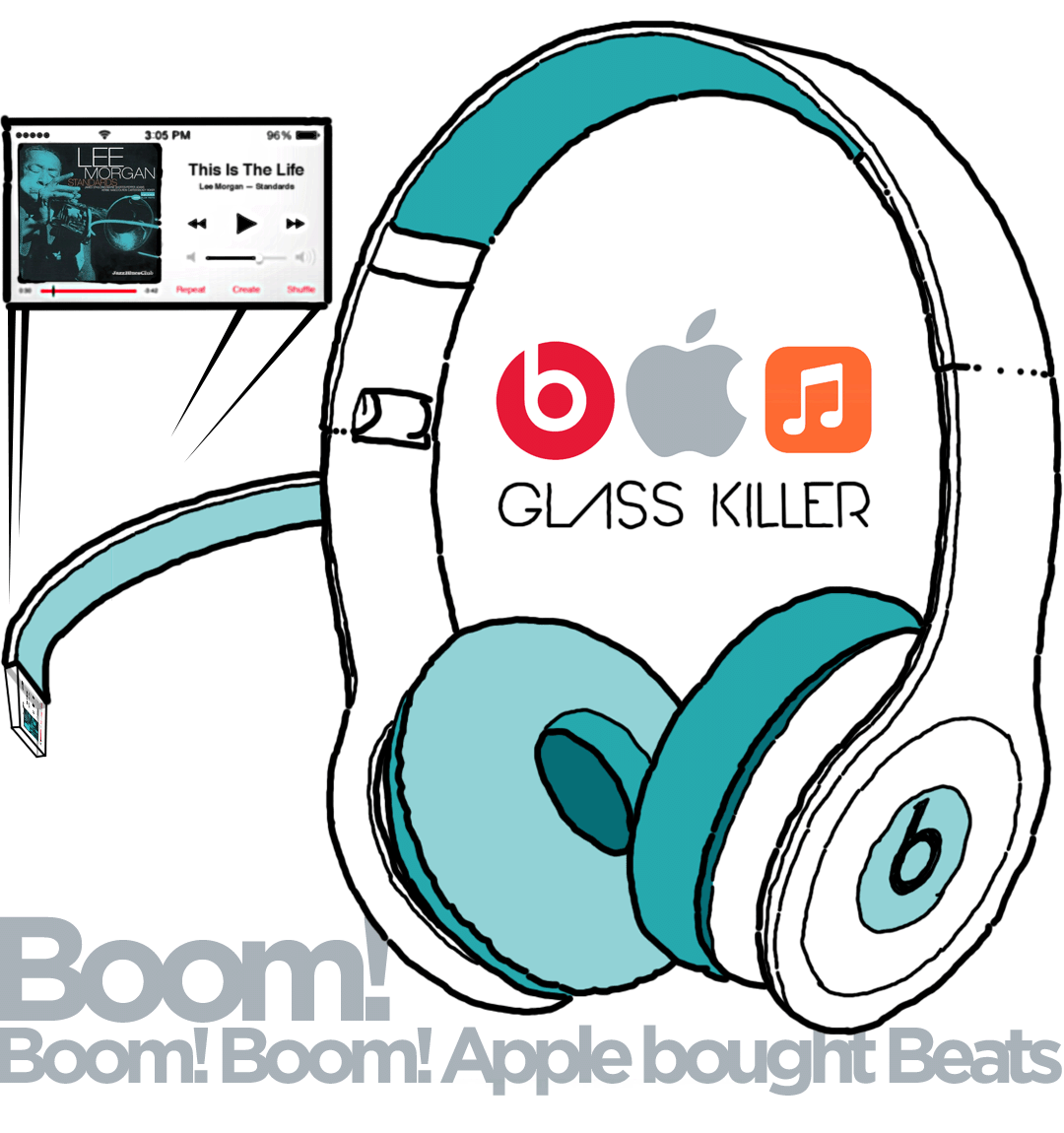Glass Killer
 Saturday, May 17, 2014 at 8:03PM
Saturday, May 17, 2014 at 8:03PM 
Extending existing user behavior is the most tried and true means to drive adoption of new user behavior. Google Glass builds upon the existing user behavior of wearing eyeglasses, one of the oldest forms of wearable technology.
An equally plausible, if less explored direction is a video display built upon headphones. While perhaps not as obvious a behavioral extension as eyeglasses for near-eye optics, it nonetheless has the advantage of an existing industrial design vocabulary for head-worn electronics — something eyewear does not, and struggles with aesthetically. A video display mounted to headphones also does not require the user to change their existing eyewear in order to use the device, and could be swiveled up out of view, when not in use.
Headphones with a video display also have a built in killer-app: Music. Controlling music selection without continually retrieving iPhone from purse or pocket makes a compelling use case. While Google Glass struggles as a solution looking for a problem, Apple has iTunes and the iOS Music app, is already the world’s largest music retailer and with the acquisition of Beats, now own the Beats Music streaming app. Beats headphones control a staggering 64% of the U.S. headphone market (in the $100+ category).
While Google struggles to shake their Google Glass image problem, Apple has just acquired the ultimate in street cred cool. When Apple launched the iPod, it was not a first mover. Nor was the iPhone the first smart phone. Nor was the iPad the first tablet computer.
The Apple Beats acquisition already makes Apple the largest wearable devices company in the world. A pair of Apple / Beats branded headphones with a built in display would also secure them as the market leader in video eyewear consumer products.
Do not underestimate.

